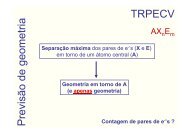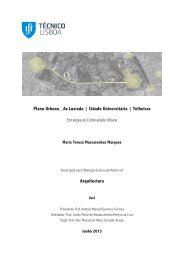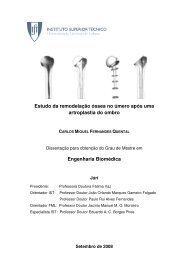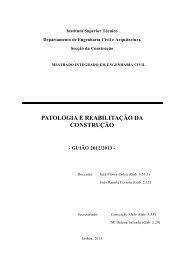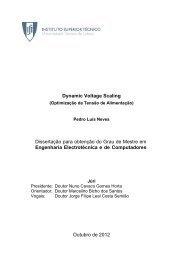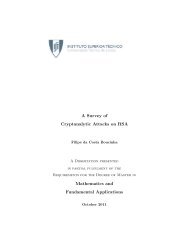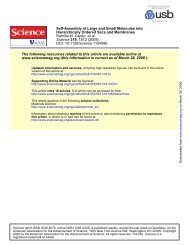3 CONSEQULNCIAS DA TEORIA DE CAUCHY
3 CONSEQULNCIAS DA TEORIA DE CAUCHY
3 CONSEQULNCIAS DA TEORIA DE CAUCHY
You also want an ePaper? Increase the reach of your titles
YUMPU automatically turns print PDFs into web optimized ePapers that Google loves.
e que por conseguinte<br />
u (x; y) = e x2 y2 sin (2xy) + c2 (x) ;<br />
para uma qualquer função c2 (x) que apenas dependa da variável x:<br />
Comparando os dois resultados obtidos podemos então concluir que para uma qualquer<br />
constante real<br />
u (x; y) = e x2 y2 sin (2xy) + K;<br />
e que<br />
f (x + iy) = e x2 y2 sin (2xy) + K + ie x2 y2 cos (2xy) :<br />
Por …m a condição f (0) = i …ca equivalente a<br />
K + i = i;<br />
donde resulta que K = 0:<br />
Logo<br />
f (x + iy) = e x2 y 2<br />
sin (2xy) + ie x2 y 2<br />
cos (2xy) :<br />
4. Facilmente se observa que<br />
f (x + iy) = u (x; y) + iv (x; y)<br />
= x 2<br />
y 2 + i2xy<br />
= x 2 + i2xy + i 2 y 2<br />
= (x + iy) 2 :<br />
Como f (z) = z 2 é obviamente uma função holomorfa, de<br />
u (x; y) = Re f (x + iy) ; v (x; y) = Im f (x + iy)<br />
concluímos que u e v são de facto harmónicas conjugadas.<br />
5. Supondo que existia uma função holomorfa, f; tal que Re f (x + iy) = y 4 + x 2 :<br />
num certo conjunto U C; então a função (x; y) = y 4 + x 2 teria de ser necessariamente<br />
harmónica em = f(x; y) : x + iy 2 Ug :<br />
Ora por derivação temos que<br />
o que implica que<br />
@<br />
(x; y)<br />
@x<br />
= 2x;<br />
@<br />
@y (x; y) = 4y3 ;<br />
@ 2<br />
(x; y) = 2;<br />
@x2 @ 2<br />
@y 2 (x; y) = 12y2 ;<br />
(x; y) = @2 @2<br />
(x; y) +<br />
@x2 @y2 (x; y) = 12y2 + 2:<br />
Ora como (x; y) 6= 0; 8 (x; y) 2 R 2 ; temos que (x; y) não é harmónica em nenhum<br />
conjunto R 2 :<br />
Logo não existe nenhuma função holomorfa, f; tal que Re f (x + iy) = y 4 + x 2 :<br />
12



